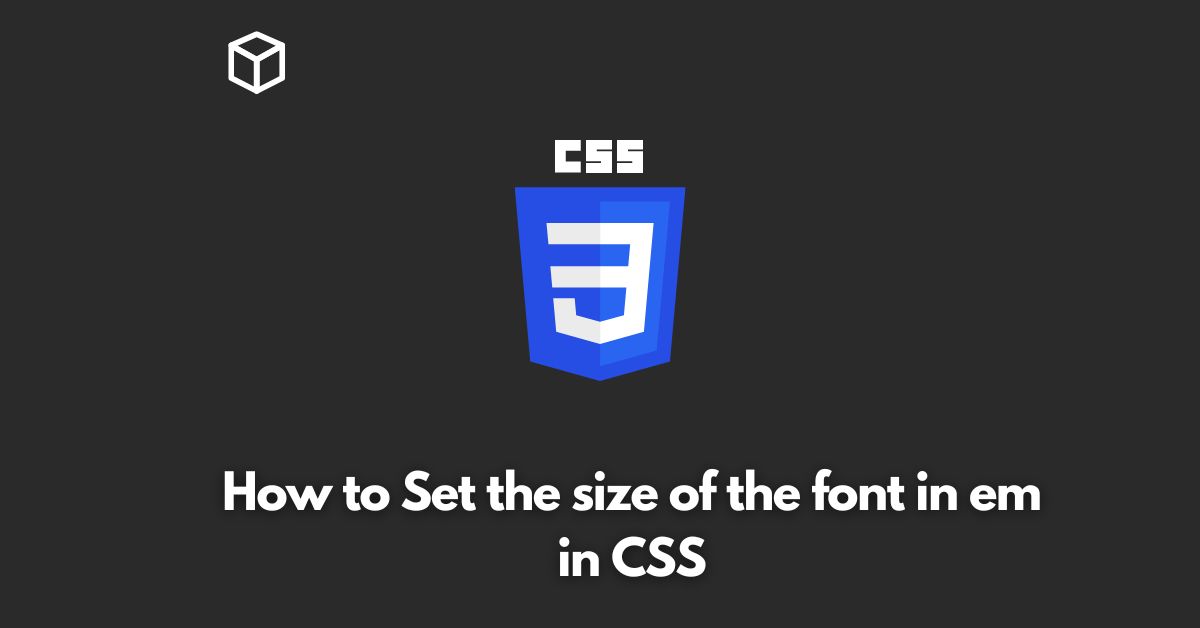As a web developer, it’s important to have a solid understanding of the various units of measurement available in CSS, including the ’em’ unit.
In this CSS tutorial, we’ll take a closer look at what ’em’ means in the context of CSS, and how it can be used to set font sizes on your website.
What is an ’em’ Unit in CSS?
An ’em’ unit in CSS is a relative unit of measurement, which is based on the font size of the parent element.
One ’em’ is equal to the current font size of an element.
For example, if the font size of the body element is set to 16 pixels, then one ’em’ is equal to 16 pixels.
Why Use ’em’ Units for Font Size?
There are several reasons why you might choose to use ’em’ units for font size in your CSS.
First, ’em’ units are relative, which means that they will automatically adjust to changes in the font size of the parent element.
This can be useful if you want to create a responsive design that adjusts to different screen sizes or zoom levels.
Second, ’em’ units allow you to create a consistent typographic hierarchy on your website.
By using ’em’ units for font size, you can ensure that all elements on the page are proportionally scaled, making it easier for users to scan and read your content.
Finally, ’em’ units are also useful for accessibility.
By using ’em’ units, you can ensure that users with visual impairments can adjust the font size on your website to their liking, without breaking the layout.
How to Set Font Size in ’em’ Units in CSS
Setting font size in ’em’ units in CSS is straightforward.
To set the font size of an element in ’em’ units, you can use the ‘font-size’ property in CSS.
The value you provide for this property should be a number, followed by the ’em’ unit.
For example, to set the font size of a paragraph element to 1.5em, you would use the following CSS:
p {
font-size: 1.5em;
}It’s important to note that the initial value of the font-size property is inherited from the parent element.
So, if the font size of the parent element is 16px, then 1em will be equal to 16px.
You can also use ’em’ units for other properties that take length values, such as padding, margin, and line-height.
Here’s an example of using ’em’ units to set the line height of a heading element:
h1 {
line-height: 1.5em;
}Conclusion
Using ’em’ units in CSS can be a powerful tool for controlling the typography of your website.
By understanding the concept of ’em’ units, and how they are related to the font size of the parent element, you can create a consistent and responsive design that is easy for users to read.
It’s important to keep in mind that ’em’ units are relative, so you should always consider the context of the element when setting font sizes.
And, if you’re working on a team, make sure to communicate with your colleagues to ensure consistency in your design.




